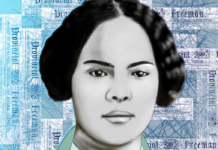School is, by nature, aspirational. Students are encouraged and motivated throughout the years of their social and academic challenges by the promise of enjoying some greater degree of prosperity. But in many communities the price of commitment to that course is to disavow their identity to achieve nothing more than a slightly better level of exploitation.
I attended graduate school at the University of New Mexico while teaching science classes at Thoreau HS on the Navajo Reservation. My classes were designed to help me analyze our textbooks and curricula regarding their relation to local culture so that I might find improved avenues of communication and, ultimately, create more effective classes. The reality was, among forty faculty members, I was alone in that training and perspective. The administrators were hard pressed to fill positions and an applicant’s stability was more important than their educational philosophy. There is nothing inherently evil about reading Canterbury Tales, understanding chemical reactions or describing cells, but when everything is outside the student’s family, or cultural experience, and sold as the way to a better life, they cannot help but feel inferior and defensive.
There was a student murdered by other students before Christmas of my first year. The violence and threats were really getting to me. I was discouraged and depressed, wondering what I was doing. The janitor, a middle-aged Navajo man walked into my room and asked how it was going while he swept. I layed out the whole scene. He stopped and told me a story.
“The other day a road crew was up in Pinedale digging a ditch along Navajo 9. They dug up a thing, a sphere, about the size of a basketball, made of dirt, or covered in dirt. It was kinda heavy so they sat it on the ground and stood there lookin at it. Was it a dinosaur egg, or some Anasazi thing, some alien thing? Pretty soon people from the nearby trailers came out and there was a small crowd standing in a circle debating. While everyone was talking a little girl walked forward and picked the thing up. Before anyone could say put it down she dropped it. The thing cracked open and a great big frog jumped out and hopped away. Everyone just stood there with their mouths hanging open.”
After asking for help in trying to make sense of the horrible events I got that nonsensical story. It further contributed to my sense that I was involved in a lost cause. Luckily, Christmas Break began before anything else happened. I drove the nineteen hours home to spend with family. I brought a paperback of Navajo folk stories with me and read the creation story. The first people emerged from below into a world that was flooded. Everyone was drowning and afraid. Before everyone died a giant frog swam up, the people climbed onto its back and were carried to a more hospitable place. I realized the janitor was telling me to take heart and pray for help. A Navajo lesson had been perfectly modeled for me.
Do schools across a state, or nation, have to be homogeneous? Can we aspire to let people and communities define success on their own terms? We are all good at guiding paths that we have taken but can teacher education be more attuned toward respecting other student outcomes? When we transplant a school from the majority culture into a minority then it becomes too easy for it to feel oppressive and contribute to anger and social dysfunction rather than to build quality of life.










